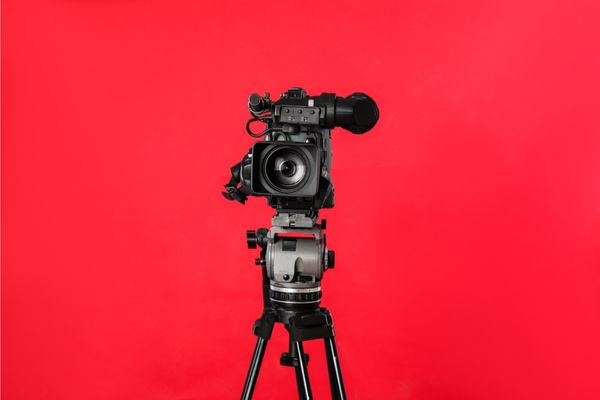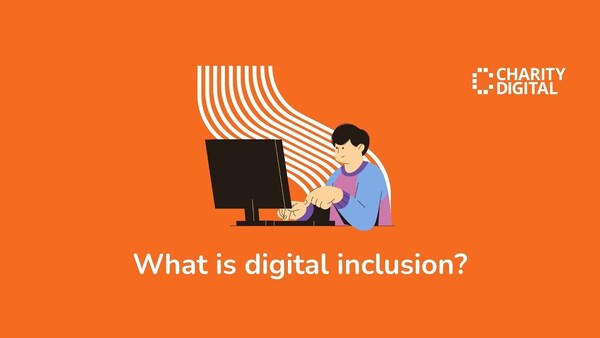Insights
INSIGHTS
All Topics
My Account
Create high-quality and engaging videos
04 Oct 2024by Ioan Marc Jones
We explore the fundamentals of video content creation, the best ways to plan and prepare, the best cameras and equipment to use, how to write an engaging script, the top tips and tricks for editing videos, the basics of user-generated video content, and so much more
High-quality video content has grown in popularity over the past decade. Consider, for example, that users currently consume one billion hours of YouTube video each day. Or that the average video consumption now stands at 17 hours per week. Or that TikTok will reach 1.8 billion active users by the end of 2024.
And the appetite for video will keep growing. Consider, for example, that 54% of people want to see more videos from organisations and 91% of marketers believe video content will increase website traffic. Or that, according to statistics from Biteable, the inclusion of video content in emails increases click rates by 300%.
The benefits of video are obvious. But organisations are still reluctant to engage with video, often due to presumptions of difficulty. They imagine video creation is complicated and costly, requires professional equipment and skilled actors, and demands hefty production resources. They believe, in simple terms, that the creation of video is beyond their reach, beyond their capability.
Creating video content is far more achievable than presumed. In this article, we cover everything you need to know about video, ranging from tips on planning, an exploration of accessible equipment, the basics of script writing, simple joys of user-generated videos, and so much more.
So, without further ado, let’s start with the fundamentals.
Skip to: The fundamentals of video content
Skip to: Plan and prepare for video content
Skip to: Pick the right camera for your video
Skip to: Find the right lighting for your video
Skip to: Check the mic is right for your video
Skip to: Recruit a star to feature in your video
Skip to: Write a fantastic script for your video
Skip to: Feature users in your video content
Skip to: Edit your video content to perfection
Skip to: The future of video content
The fundamentals of video content
The media landscape is changing. Tech advancements – from the internet to smart phones, from social media to generative artificial intelligence – have changed the ways people consume information. Instant access is the main driver of that change. We are presently able to consume the exact information we want, when we want, often with few barriers to consumption.
You can access information on any given topic, in any given form, in a matter of seconds. Diverse sources, with different levels of expertise, conforming to different levels of understanding, catering to different philosophies and ideologies, cover every single topic, in every medium, and our habituated use of search engines allow us to find exactly what we require with ease.
We now consume with an expectation of pace: as quickly as possible, as easily as possible. That perhaps explains the intense growth of video content. Video combines visuals and sounds, simultaneously engaging multiple senses, which tends to capture and retain attention more effectively than text or audio alone. Video has a capacity for quick delivery, stripping back the superfluous and delivering only the important information. Video is a profoundly fast medium.
Consider the room you currently occupy. To convey that room using only the written word would take a few sentences at least – and still the reader would only have a broad sense of the space. In a video, the viewer knows exactly how that room looks in a matter of seconds, if that.
But even within that broad framework, video allows for various forms of consumption. Popular videos are increasingly catering for mobile, for example. Consider that more than half of all video content is consumed on smartphones and tablets, according to Wordstream.
It is perhaps no surprise, with video consumed quickly and often on-the-go, that video content has become shorter. According to Biteable, 72% of people prefer short videos for learning and 33% of viewers stop watching a video after 30 seconds and 60% stop before the two-minute mark.
Viewers want shorter videos across the board, even with regard to typically longer video content, such as interviews. The best performing videos should be entertaining and gripping. In a world of saturated media, when many consumers are also creators, successful video needs to stand out. On social media, according to HubSpot, 65% of viewers said they watched videos purely for entertainment.
The best videos are funny, entertaining, and engaging. They also need to fulfil your needs, meeting the objectives you set. But how exactly can you achieve all of the above? How can you streamline the process of video creation? How can you make your videos stand out from the crowd?
Plan for video content
Planning is the first step to creating high-quality and engaging video content. In this article, we hope to simplify the process, offering you solutions rather than creating problems. For the planning stage, you do not need spreadsheet after spreadsheet, nor do you need a huge ideation session, or even the grandest ambitions. Start small and build from that position. A few simple steps should suffice.
Establish your video content goals
Start by determining your objectives. What do you want to achieve by creating video content? Your goals can start broad, but you’ll need to narrow them down.
Broad goals should give you a sense of what you might want to achieve. Narrow goals should show you exactly what you need to do and by when. Broad goals are open to interpretation and unquantifiable. Narrow goals are measurable, timed, and achievable.
Broad goals might include, for example, generating more page views for your website or boosting your presence on YouTube. Narrow goals need specifics, such as increasing website page views by 11% year-on-year or reaching 3,000 subscribers on YouTube by July 2025.
Consider the form and length of video content
You’ll need to think about the length and form of your video content. It’s vital you figure that out early, because you would not plan for hour-long interview videos in the way you’d plan for edited two-minute talking head videos. The entire plan will depend on the form and length of videos.
Different forms provide different benefits. Short, snappy, and funny videos are often preferred, but may not suit your overall goal. You might want to provide in-depth analysis on topical subjects, in which case you’re likely to sacrifice number of viewers for more engaged views.
You should consider where you’re sharing the video. If the video has been made with social media in mind, for example, the video will likely be short: the feedback loop on social media, along with infinite scroll functionality, means that people are less likely to consume long videos on socials.
So the form and length of content depends, at least, on the benefits you’re aiming to maximise, the audience you’re trying to reach, your goals, and the sites on which you plan to share content.
Plan the number of videos
The cadence of publishing will differ in each organisation, largely dependent on time and resources. Some will commit to a couple of two-minute videos per month, others might choose a daily five-minute video with a talking head and minimal editing. Others still will have monthly hour-long episodes in interview format. All of these are options – and all can serve a core purpose.
Remember to always start small. You can create one video and track how long it might take, rather than planning for the future with little idea of the potential costs and demands. Pushing towards creating more videos than manageable will reduce the quality and undermine your initial plans.
Create a video content calendar
Once you know the length, form, and cadence of your videos, you’ll want to create a video content calendar or include video in your existing content calendar. You can do that with a spreadsheet platforms, such as Excel or Airtable, in a matter of minutes.
Include all vital information, particularly anything that will increase visibility for stakeholders. You should at least include the names of the people responsible for the content, the form and type of content, the length of the content, and the date at which you aim to complete or publish the content.
Find inspiration for your video content
Great video content depends on finding great ideas that resonate with your audience. That’s no small feat. Finding ideas depends on utilising tools, many of which are free and easy to use.
RSS feeds are favoured by journalists and subeditors. They allow people to track trending topics in any field, which can provide instant content ideas in a curated list, compiled from news sites, government websites, non-government bodies, newsletters, social media pages, and so on.
But many people prefer a simpler approach: the favourites bar on your browser. To use the bar effectively, find relevant sites that publish inspiring or engaging content, the sort you might want to repurpose or build upon, and favourite them. Then, whenever you’re looking for content for your videos, you can re-visit the best sites and find some great inspiration.
Keyword research tools can prove particularly helpful. The Reddit keyword research tool shows you the hot topics discussed on Reddit at any given moment, which means that you can pop in a subreddit and it will spit out ideas directly related to your industry. You can get creative, typing in any subreddit that might provide great content ideas for your organisation.
Google Trends and Google Search Console are popular keyword research tools, often used by people trying to improve their website views through search engine optimisation (SEO). And other SEO tools might come in helpful, too, such as the keyword tools provided by Moz and SEMrush.
The final, and perhaps simplest, approach is finding out what people are talking about on social media. But you’ll need to practice caution, as social media trends move quick. The popular topic now may not be the popular topic in the future when you publish your video. So remember to aim for the sweet spot of popular, trending topics that are sure to have longevity – so-called evergreen content.
Pick the right camera for your video content
To create a video only really requires one thing: a camera. Your choice of camera will depend on your needs and your budget. If you have a large budget and want high-quality videos, you’ll need to spend a bit more on a camera, perhaps finding something recommended by professionals.
If you’re looking for interviews, perhaps talking heads, you might not need such an expensive camera. If you’re looking to record yourself talking, with the aim of publishing on socials, then you can likely rely on your mobile phone. No need to spend a penny.
To help you decide the camera you need, we’ve compiled the main types of cameras and information on why you might pick them.
Smartphone cameras
These cameras are best for casual photography and expectations of low-quality. They are particularly helpful if you plan to only share videos on socials, as many sites will allow built-in editing capabilities, streamlining the uploading process. Smartphone cameras vary in quality, but even the best smartphone cameras are unlikely to compete with the latest professional cameras.
Compact cameras (point-and-shoot)
These are easy to use and portable. They typically work well on location shoots, so could prove helpful if you’re aiming to shoot outside or anywhere away from the office. They are ideal for everyday use, but typically have limited manual controls and sensor size – and they do not produce the highest quality footage. They come at a cost, but that cost is not particularly high.
Action cameras
Action cameras and camcorders offer more zoom and manual controls than compact cameras, but often have fixed lenses. They are typically quite portable, so again work well on location shoots, and they have waterproof options should you want to record in wind, rain, or snow. If you’re aiming to film underwater, for whatever reason, action cameras may serve you well. They offer decent quality video, at a moderate price, and help with casual projects and travel vlogging.
Mirrorless cameras
These cameras are often lightweight with interchangeable lenses. They provide high-quality images and advanced features, often suitable for enthusiasts and some professionals. The mirrorless camera typically costs more than the above, at the higher range, but many of them will offer 4K and higher resolutions, helping organisations that want to provide the professional look.
DSLR cameras
Digital single-lens reflex (DSLR) cameras are durable cameras with interchangeable lenses and excellent battery life. These are cameras typically used by photographers who may want to use them for video. They offer various advanced features and high-quality imagery, but they can prove quite costly.
Professional cinema cameras
These are the high-end, high-quality cameras, largely used in film and television, that offer superior image quality and a range of functionality. These are often pricey and should only be used if you demand the highest standards of footage quality. The cameras are often not the most portable, but some newer models are smaller and can be carried to various locations.
The above is only an overview. Think about the type of camera that best suits your budget, needs, and objectives. Then search for the best cameras on the market. Recommending cameras rests outside the scope of the article, but here are reputable websites that provide an overview:
- TechRadar: The best video camera 2024
- RTINGS: The six best cameras for YouTube
- Digital Camera World: The best camera for filmmaking in 2024
Once you’ve picked your camera, you should look at other equipment to improve the process.
Find the right lighting for your video content
For the more straightforward forms of video content, lights are likely not required. You can usually utilise outside lighting, or lights in the room, as well as any other portable lighting you might have: mobile phones, candles, torches, whatever works. Remember that the best videos are often authentic and low-budget, and authenticity seldom requires high-level production elements.
But if you’re aiming for a more professional feel, lighting can help. With that in mind, we thought we’d compile some of the main types of lighting that are commonly used by video creators.
Ring lights
If you’re doing a talking head video, you’ll want to use lighting to make sure your face is evenly lit and to remove any unwanted shadows. Ring lights are popular with influencers, easy to move around, and affordable, so consider these if you’re considering the talking heads option.
LED panels
Light-emitting diode (LED) panels are a growing presence in the world of video production. They provide exceptional control over brightness and temperature. Panels produce a smooth image and offer a great range of products, from the super affordable to the high-end. LED panels are great for showcases and vlogging and could also prove particularly useful for interview videos or scene shoots.
Tube lights
Long, thin, and cylindrical, tube lights provide a scene with ambience, which you can alter to suit the mood you’re trying to create. Tubes are versatile and easy to utilise. They require no professional input, nor any serious technical expertise. Tubes can form a graduated light across everything in your scene. They are particularly suitable for studio scenes, perhaps including more than one person, or for the backdrop of a livestream.
Softbox lighting
These lights manage to achieve diffused light across the subject in your video. These are more suited to professional videographers, because the level of diffusion and soft light output is unmatched by the above forms of lighting. Softbox lighting is an investment. They are best used with people as the subject, so again lend themselves to talking head and interview videos.
The above is just a brief snippet of the potential options. Each type of lighting will have different functionalities, so do your research to find the best option for you. Recommending lighting rests outside the scope of the present article, but reputable websites provide an overview:
- Digital Camera World: Best video lights in 2024
- Camera World UK: LED video lighting
- PC Mag: Best ring lights and LED Panels
Once you’ve picked your lighting, you should consider your microphone.
Check the mic is right for your video content
It’s becoming a trend but, as with the above, remember that investing in a microphone is not necessary unless you want a polished, professional sound.
Mobile phones, for example, can record videos well enough and the absence of great sound quality often forms part of the authenticity. If you’re aiming for a more professional sound, then a high-quality microphone can prove helpful.
Unlike cameras, and to a lesser degree lighting, microphones tend to be much more affordable. But there are different types, each of which serves a particular purpose.
Here are four of the main types of microphones that you should research:
Dynamic microphones
These are your handheld studio mics, the sort you see in everyday punditry. They’re not sensitive, so accept loud noises, and they tend to work like a spotlight: picking up noise from the direction in which they’re pointed. Dynamic microphones are often cheap, but they do show up in videos, which might not suit your needs, especially if you’re shooting a scene, or looking to create a talking head style video.
Condenser microphones
These are high-quality studio mics for podcasts or voiceover work. They are typically more expensive than dynamic mics and deliver a clearer single-source audio recording. Consider this type of mic if you’re engaging in interviews but remember that they are quite cumbersome and will stick out in your video.
Lapel or lavalier microphones
Lapel or lavalier mics are small condenser mics that you can attach to people’s clothing. You have probably just about noticed them hundreds of times in interviews, These are perfect for talking head videos, allowing your narrator to deliver information with a barely noticeable mic in the shot. For vlogs, short films, and more informal interviews, lapel mics are also perfect – and affordable.
Shotgun microphones
Shotgun mics are a style of mic that you see on film sets. Most shotgun mics are particular forms of the condenser mic. They can be mounted in various ways, including on the camera, and tend to pick up noise in a very focussed way. They are typically more costly than other mics but offer a professional feel. These are worth investing in only if you plan on producing the highest quality videos – and have the budget.
The above is just a brief snippet of the types of microphones on the market. Each type of mic will have different functionalities, so do your research to find the best option for you. Recommending specific mics is outside the scope of this article, but reputable websites provide an overview:
- Sound Guys: Best mics for YouTube
- Digital Camera World: Best mics for vlogging and filmmaking
- TechSmith: Best microphone for recording video
Once you’ve picked your camera, lighting, and mic – or not picked them, as the case may be – then you’re ready to recruit the star of your video, the person best suited to make your videos shine.
Recruit a star to feature in your video content
Will you use a professional actor, or Jeff from Sales? Or you might just use the person behind the camera, asking questions of an interviewee. None of these are the correct, or incorrect, way of making a video. Each provides a different feel and tone, and each provides your audience with information in a unique way.
For low budget videos, talking heads are often a great choice. You can simply find someone in your team, someone willing to stand in front of a camera, someone who can deliver information in a concise manner, perhaps with a bit of pazazz. You can write a script, or simply provide some general bullet points.
You can also hire actors, if you think it needs the star quality. There are plenty of talent databases and talent agencies to choose from, or you can check local acting programmes. Hiring actors can increase the production value, but it takes away from the authenticity, particularly if you reference your mission.
For maximum authenticity, you can ask whether service users want to feature in videos. That means allowing people you serve to talk about elements that directly impact them. User-generated videos are often well-received, as we’ll discuss in more detail later, and can still be produced at a budget.
Interview videos only require an interviewee. In such instances, the camera person, or an eager assistant, asks questions and the camera focusses on the answer. You can use just the audio for the question, or simply insert slides with text of the question, and focus entirely on the answer.
Or, alternatively, you could set it up like a coffee table conversation, or a podcast discussion, or ask interviewee and interviewer to engage in an activity. That can all be achieved in house, but for added value you could recruit journalists or anyone with experience with on-screen interviewing.
How to write a great script for your video
The first thing to consider: do you really need a script? For many forms of video, including talking heads and interview videos, you could probably write down questions or bullet points, let the star ad lib, or just offer a cheat sheet. For other videos, you might want a skeleton script, but allow for improvisation.
But scripts can add to the professional approach. The below tips and tricks will help you develop a strong script, even if it’s just an A4 piece of paper, or a few hundred words on a screen.
Include characters in your videos
According to a study by Scientific American, 65% of our conversations are based on storytelling. But what makes a great story great? The first thing to consider is the characters – who are not always as they seem.
Do not conflate characters with your narrator. Your narrator, your star, might deliver the story, but they are not necessarily the main character. Your characters are the individuals the story concerns. These people, present or not in the actual footage, carry the video forward by facing and overcoming conflict.
The best scripts will show development: the audience want to see characters grow, fail, succeed, or at least change in some substantial sense. Even with small advice videos, we often see that trajectory. The talking head typically outlines a problem, suggests a solution, and provides the audience with a happy ending.
Plot and characterisation feature in almost all videos, whether they are obvious or not. Take a video about managing a cyber attack, for example. The main characters – your organisation as protagonist, the cyber criminal as antagonist – experience an attack (conflict), learn to deal with that attack (character development), find answers (solution to conflict), and usually end up with a moderately happy ending.
Make your narrator lively and inviting
Your narrator may or may not be the main character. But, in some form, they tell the story. The best story told badly is a bad story. So you need to make your narrator welcoming, engaging, and curious. If writing a script, try to minimise the size of sentences: a rambling narrator is the fastest way to disengage an audience.
Think about how the script appears on the page. Take a step back. Are there long and winding sentences? Are blocks of text occupying the page? These are typically red flags. You’ll want to make the script pithy and punchy, pushing your narrator to feel livelier.
Ensure that your narrator is an expert
People tend to champion authoritative writing. In articles, the demand of authority feels a little clumsy, a little too simplistic, as though one style of writing works for everyone. Audiences respond well to people working out a problem, especially when presented in the first-person. Lots of great essays opt for the exploratory, using language that, while confident, embraces elements that deviate from the authoritative.
But narrators of videos, particularly short educational videos, need to be the expert. They need to use simple and authoritative language, to convey information in an effective manner, to condense or clarify complex information to aid audience understanding. So always try to ensure your narrator is the expert.
Use humour when appropriate
Making people laugh is the quickest route to engagement. But it’s a difficult feat, as trying – and failing – to make people laugh is the quickest route to disengagement. The first, and most obvious, point to consider in your script is whether the subject matter lends itself to humour. It might not – and that’s fine. The last thing you want to do is force humour into a topic that demands a more serious tone.
But, if you feel like humour has a direct place in the video, aim to include it. One bit of advice is to have other people read the script, especially concentrating on elements of humour. Jokes are prone to myriad interpretations – something funny to you might be dull, tedious, or even offensive to someone else. But if your joke lands, if it makes others in your team laugh, then it’s likely to make your audience laugh, too.
Do not sacrifice clarity for wit
Remember that humour and wit can detract from clarity. A joke needlessly inserted can remove the audience from the main point of the video and stop them engaging. So practice caution when using humour and remember that humour should consolidate or substantiate the information given, rather than undermine or exist independently from it. A good joke aids understanding, even if it’s inverting the message.
Include instructions in your script
Add instructions to your script. The instructions could relay information to the narrator, perhaps suggesting the best form of delivery: deadpan for comic effect or encourage passion to hammer home the point. Each instruction can help improve the delivery. They are simple nudges that the narrator can take on board.
Stage instructions should be included. If you want the narrator to move slightly, or use a prop, or point to a section on the screen in which you wish to insert visuals, or run away from a hungry bear, add that to the script. Stage instruction can work for comic value, too. Maybe someone fumbles a prop or leaves the room suddenly – all of these devices can add texture and humour to your video.
You should leave instructions for the video editor. Suggest the editor adds visuals, dims the lights, quietens the music, includes specific stock footage, introduces sound effects, and so much more. Giving editors guidance helps them at a later stage. They may not follow all your instructions – due to time limitations or practical restrictions – but the small clues and indications will certainly prove valuable.
Feature users in your video
Your users are characters in your story. But they may also feature as narrators, dictating the story from their own perspective. The trend of user-generated content has become huge in the past few years, so it might benefit your organisation to lean on that trend. Below we look at user-generated video content in detail.
Defining user-generated content
User-generated content is content created by customers and users, often published on social media or other popular channels. User-generated content can come in many forms, including images, videos, reviews, testimonials, and so on. It allows you to centre the user, with a level of authenticity and personality that can boost the emotional connection with the audience.
The benefits of user-generated video content
User-generated videos provide myriad benefits. As mentioned above, stories that feature users front and centre feel more authentic. In fact, according to a Stackla survey, consumers view user-generated content as 2.4 times more authentic when compared with other content.
Authenticity engenders trust. User-generated content acts as a trust signal by allowing your viewers to skip all the pageantry and get right to the crux of what’s happening. It’s essentially a short window into the lives of your users, which helps the audience feel more involved and gives them an immediate sense of loyalty.
And, on top of all that, user-generated content can amplify the voices of service users and people who support your mission, playing an essential role in service delivery and indeed campaigning.
Popular types of user-generated video content
There are many different types of user-generated video content. As with the above, you’ll need to find the best content to suit your organisation, based on your present resources, needs, capacity, capabilities, and goals. Below we look at three of the most prominent forms that might provide a little inspiration.
User-generated video collage
Ask your users to send in videos on a particular subject, or regarding a particular theme, then make a collage video of the experience. So, for example, you could ask users to discuss how climate change impacts them on a day-to-day basis and compile all entries into a collage of responses, flicking between users to show the diversity of experience. Video collages are inviting and engaging – and surprisingly easy.
Interviews with users
Interviews have featured heavily in the present article. There’s a reason for that. They are easy to conduct, easy to film, and easy to edit. They are expected and accessible: your audience already likes and understands video interviews. We see them every day on television, from the evening news to Match of the Day to Love Island. Including users in interviews adds authenticity. You can simply film one, or many, of your users on an appropriate topic, perhaps edit with title pages and subtle visuals, and you’re ready to go.
Video diaries
A video diary can come in many forms. It could be part of a longer video, perhaps even with a written script, that details the life of users, shows why your mission is so valuable, and shows the impact of your work. An alternative is the more authentic, low-budget version. You could, for example, present something close to ‘a day in the life’ of a user, showcasing some of the obstacles and challenges they might face, and demonstrating how your charity supports them. That can be shot effectively on a smart phone. Your audience would expect the lower video and production quality – and it would add to the overall authenticity.
Edit your video content to perfection
You’ve planned for the video, picked your format, found the right equipment, recruited your star, written your script, and now you’ve shot the video. Now comes one of the most important stages: editing the footage. Editing is necessary, even if you’re publishing a short selfie video on socials. You will always need some form of editing, even if minimal. The question is what degree of editing you need.
Short social media videos only require an editing tool on a browser, or perhaps on the social media app you plan to share on. You can simply cut and trim, maybe add a filter, perhaps include the most basic imagery and visuals. Some platforms, such as TikTok, offers transcript generators that boost accessibility.
For more in-depth editing, you’ll likely need a dedicated programme. Most laptops and computers possess built-in versions of editing software, typically Windows Movie Maker or Apple iMovie. The built-in versions are relatively limited in terms of functionality but should suffice for the more basic forms of editing.
But if you plan on releasing lots of videos, particularly videos reliant on slides and imagery, videos that aim for professionalism, or videos that require several scenes, you’ll need to invest in software. The good news is that much of the video editing software on the market is affordable and easy to use. Below are three great options, all of which require no prior expertise, all of which could improve your videos.
- Adobe Premiere Pro: The industry standard, Adobe’s editing software supports every format, provides a huge range of functionality, and seems to be rapidly introducing AI-powered tools to speed up editing
- DaVinci Resolve: Seen as the best free option and perfect for people operating on a budget. Like Adobe, DaVinci offers tools to bring creations to life, including Fusion, a built-in visual effects editor
- CyberLink PowerDirector: CyberLink is a powerful editor with an easy-to-navigate interface. It offers loads of features and functionalities and is perhaps best for editors with a little more experience
These are three options that might suit your organisation. But there are plenty – indeed, thousands – of options on the market. Below are some reputable sights that pick the best contemporary video editing software options, which you can read to aid your research and find the best one for you.
- Tech Radar: Best free video editing software of 2024
- PC Mag: The Best Video Editing Software for 2024
- Creative Bloq: The best video editing software
- Zapier: The best video editing software in 2024
- Voquent: 10 Best Video Editing Software for Beginners in 2024
Check out the above, conduct some research, and consider the best options for your organisation.
The future of video content
Video content is quickly evolving. Audiences currently prefer short and snappy videos, but that may change in time. Social media sites that once dominated the video landscape may fall from grace, as we’ve seen with Vine, and alternative sites might spring up to take control. The best equipment may become outdated. And the popularity of certain forms is liable to change. In the simplest terms, people need to keep up.
Keeping up with video content is essential to success. That depends on understanding shifting audience desires and how you can meet them. It depends on following the latest video technology trends, applying careful consideration of subject matter and style, improving scripts and narratorial delivery to meet your savvy audience, and taking advantage of the latest developments in editing.
The future of video content belongs to the innovative and the daring, the ones willing to try new things, the ones willing to experiment to improve their results, the ones that confront rather than withdraw from the evolving landscape. We hope the above serves as a simple guide. We hope you go much, much further.
More on this topic
Recommended Products
Recommended Products
Our Events
Charity Digital Academy
Our courses aim, in just three hours, to enhance soft skills and hard skills, boost your knowledge of finance and artificial intelligence, and supercharge your digital capabilities. Check out some of the incredible options by clicking here.






















